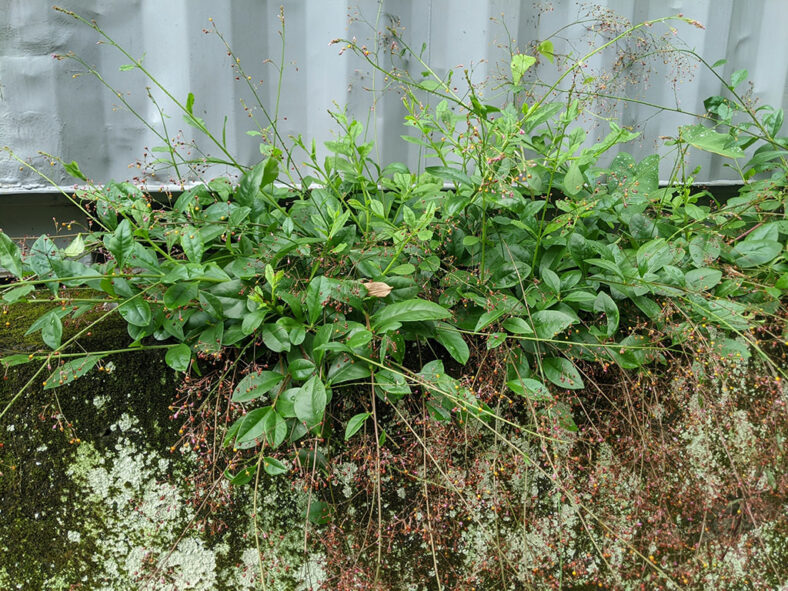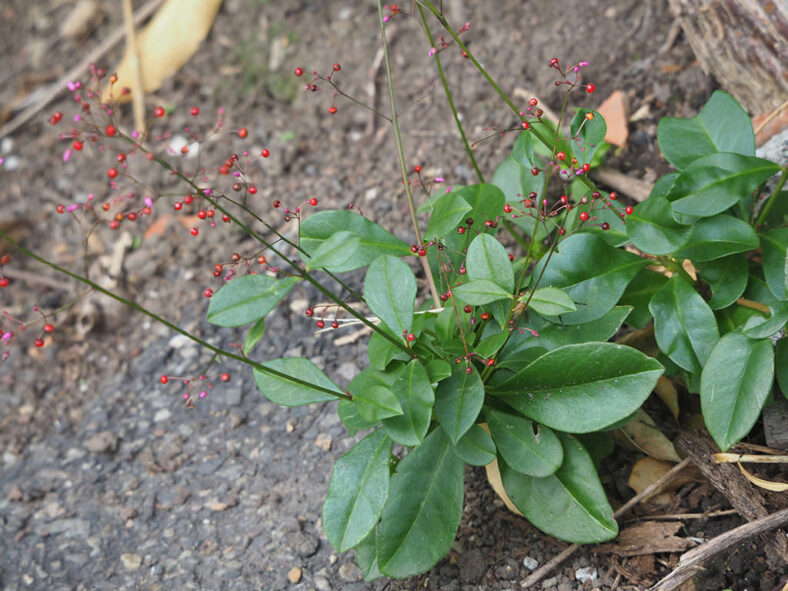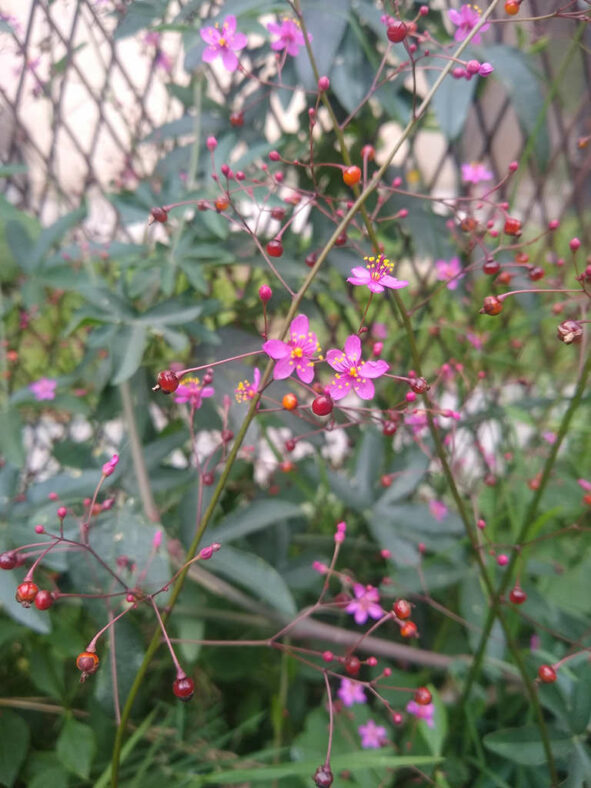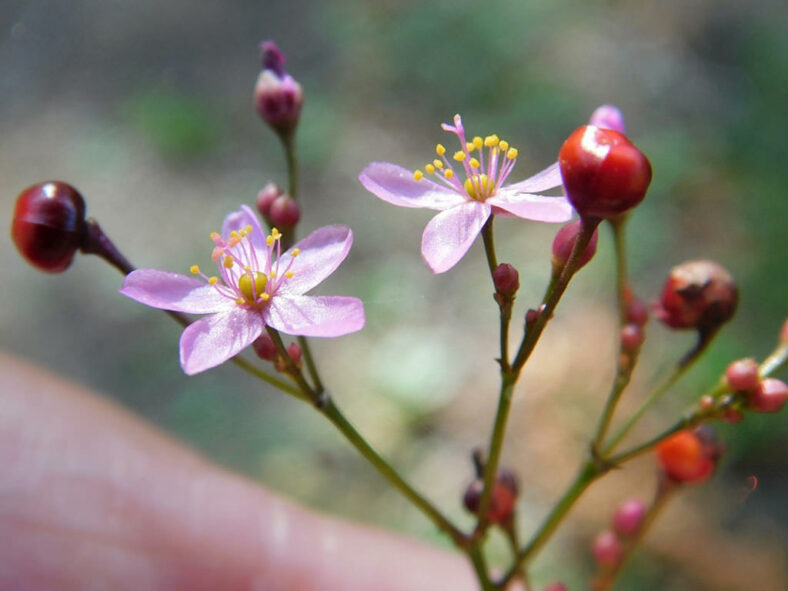Talinum paniculatum is commonly grown as an ornamental plant, but it is also used as a vegetable and in traditional medicine. It is an excellent choice for rock gardens and hot areas where not much else can thrive.
Scientific Name
Talinum paniculatum (Jacq.) Gaertn.
Common Name(s)
Fame Flower, Jewels of Opar, Pink Baby's Breath
Synonym(s)
Claytonia paniculata, Claytonia patens, Helianthemoides patens, Portulaca paniculata, Portulaca patens, Ruelingia patens, Talinum dichotomum, Talinum patens
Scientific Classification
Family: Talinaceae
Genus: Talinum
Etymology
The specific epithet "paniculatum (pan-ick-yoo-LAY-tum)" means "have tufts, tufted; paniculate" and refers to the form of the inflorescence. The common name "Jewels of Opar" was borrowed from the title of the novel Tarzan and the Jewels of Opar by Edgar Rice Burroughs.
Origin
Talinum paniculatum is native to the southern United States, Central America and South America, the West Indies, southern Asia, and the East Indies.
Description
Talinum paniculatum is a shrubby succulent with erect, slender stems that arise from a tuberous root and bear green, slightly fleshy leaves. The stems are usually unbranched or sparsely branched at the base. They are woody at the base, succulent above, and can grow up to 3.3 feet (1 m) tall. The leaves are broadly elliptic to obovoid and measure up to 4.4 inches (11 cm) long and 2 inches (5 cm) wide.
The flowers appear in terminal many-flowered panicles with wiry stalks, opening towards evening and hanging over the foliage in summer. They can be red or pink, sometimes orangish, yellowish, or purplish, and measure up to 0.4 inches (1 cm) in diameter. The fruits are showier than the flowers. They are yellow or pinkish-yellow, nearly spherical capsules that can reach up to 0.2 inches (0.5 cm) in diameter and contain glossy black seeds.

How to Grow and Care for Talinum paniculatum
Light: Talinum paniculatum thrives in full sun but can tolerate partial shade for part of the day.
Soil: It grows best in well-drained soils rich in organic matter but can adapt to most soil types.
Temperature: This plant can survive in harsh conditions and prefers a hot climate. It grows best in USDA Plant Hardiness Zones 9a to 11b, with average minimum winter temperatures ranging from 20 to 50 °F (-6.7 to 10 °C).
Watering: From spring to fall, water it thoroughly, but allow the soil to dry between waterings. Talinum paniculatum can tolerate drought for several weeks at a time. In winter, the plant requires little or no water.
Fertilizing: Although the plant can grow well without fertilizer, it may benefit from extra nutrients. Feed it only during the growing season, using a water-soluble fertilizer diluted to half the recommended strength.
Repotting: Talinum paniculatum grows well as a potted plant. Repot in the spring when its roots become cramped. Generally, this plant should be repotted every other year to provide fresh soil.
Propagation: It is easy to propagate Talinum paniculatum by seed or cuttings. Seeds are tiny, so although they can be sown directly outside, keeping weeds from the bed while germinating can be difficult. Indoor germination is recommended. If you sow the seeds outside, do so 2 to 4 weeks after the first frost date when the soil is warm.
Toxicity of Talinum paniculatum
Talinum paniculatum is considered non-toxic and safe around kids and pets.
Links
- Back to genus Talinum
- Succupedia: Browse succulents by Scientific Name, Common Name, Genus, Family, USDA Hardiness Zone, Origin, or cacti by Genus
Photo Gallery
Click on a photo to see a larger version.


